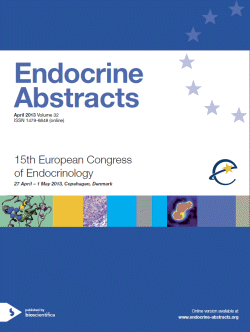Searchable abstracts of presentations at key conferences in endocrinology
Symposia
PCOS
ea0032s18.1 | PCOS | ECE2013
Environmental impact on the PCOS phenotype
The action of insulin acting as a co-gonadotrophin in women with PCOS has long been a focus of research. In western populations, a key environmental effect on PCOS is through the obesity epidemic. The resulting insulin resistance has direct effects on the clinical manifestation of PCOS with serum insulin showing positive associations with BMI, serum testosterone, AMH and variably with ovarian volume. AMH is a particularly interesting marker of PCOS with respect to insulin as d...
ea0032s18.2 | PCOS | ECE2013
PCOS in adolescence: towards a therapy targeting adipose tissue
PCOS is a common endocrinopathy in women that has traditionally been viewed as an ovarian disorder. Accordingly, the classic therapeutic approach, even in adolescents without pregnancy risk, is to silence the ovaries with an oral contraceptive (OC). Recent evidence indicates that PCOS is primarily a disorder of adipose-tissue hyperexpansion that may originate in early life, develop across childhood and puberty, and reach a full-blown stage in adolescence, manifesting with ovul...
ea0032s18.3 | PCOS | ECE2013
The diagnosis of PCOS in adults: new biomarkers
The National Institute of Health (US) recently organized an Evidence-based Methodology Workshop on the polycystic ovary syndrome (PCOS), focused on definition of the syndrome. Among others, the conclusions included the following: i) the need to assign a name that reflects the complex interactions that characterize the syndrome; ii) it is advisable to maintain a broad, inclusionary diagnostic criteria of Rotterdam, while specifically identifying the most common phenotype, chara...




